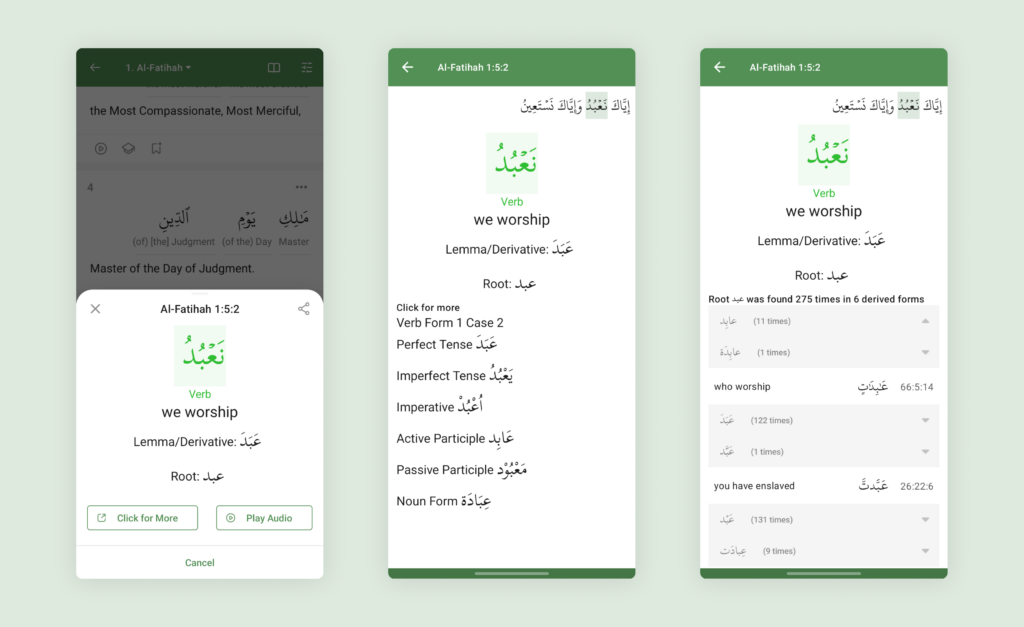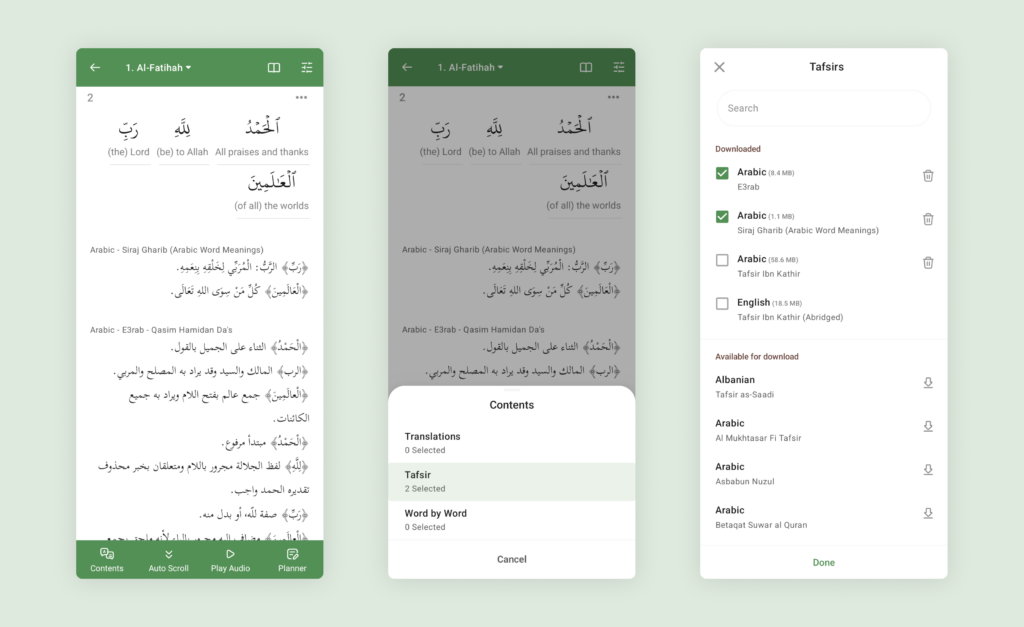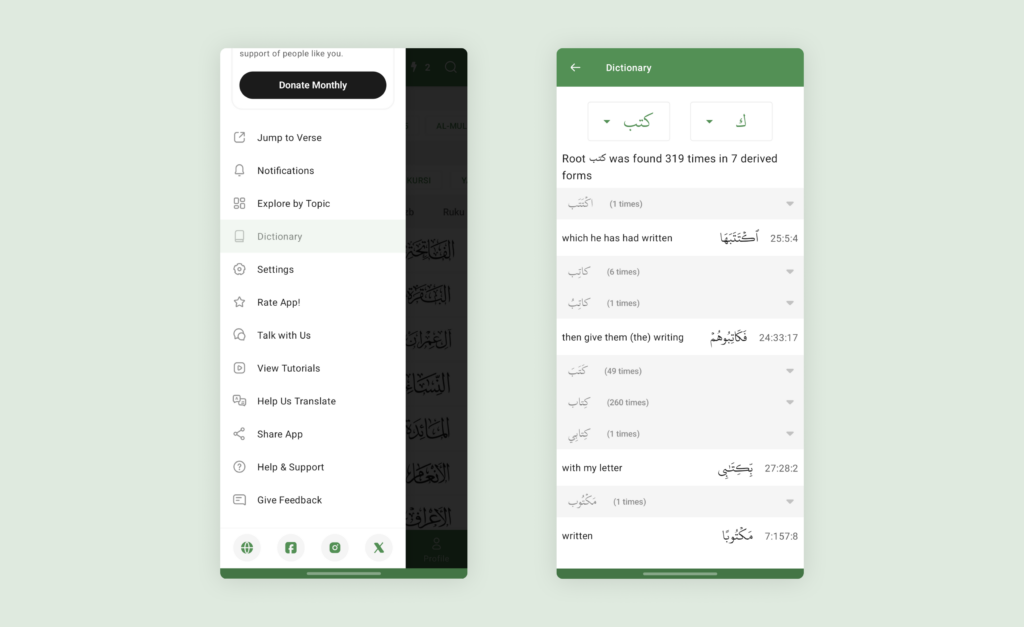Deepen your understanding of the Quran through our comprehensive Arabic analysis tools.
Whether you’re a beginner in Arabic or an advanced student of knowledge, our Quran app offers tools that make learning Arabic easier and more meaningful.
Let’s look at how features like e3rab (morphology), gharib (uncommon Arabic word meanings), word root, lemma, grammar details, verb forms, word occurrences can help you.

E3rab (Morphology)
E3rab explains the grammatical structure of each word in the Quran. It helps you:
- Understand how words fit into an ayah
- See how grammar changes the meaning of ayahs
- Improve your knowledge of Quranic Arabic grammar for deeper studies
For example, when you read Surah Al-Fatiha, you’ll see why “الحمد” and “لله” are written this way and how they connect.
To study E3rab, go to Settings > Tafsirs. You can download the E3rab by Qasim Hamidan Da’s from the list and start studying.

Gharib (Uncommon Arabic Word Meanings)
The Quran has words that are not often used in modern Arabic. The Gharib tool helps you:
- Learn the meanings of uncommon words
- Understand their context in Quranic ayahs
- Build your vocabulary for classical and modern Arabic
You can download Gharib from the Tafsirs list. Currently, we have 2 Arabic word meanings.
Word Lemma and Root
Roots and lemmas are key to understanding Arabic. Our app highlights:
- Lemma: See the base form of words to understand patterns and variations
- Roots: Learn the core meaning of words by studying their roots
Most Arabic words come from three or four letter roots. This helps you see how words are connected, learn word families faster and spot patterns across the Quran.
For example, the words “book” (كتاب), “library” (مكتبة), and “writer” (كاتب) all come from ك-ت-ب. Once you know this, you’ll start seeing these patterns everywhere!
You can easily see the word lemma and root by tapping on a word in the app.
Word occurrences in various forms and Quran Dictionary
Tracking how words appear in different forms in different places helps you:
- Find every instance of a word in the Quran and track word frequencies
- Remember words better by recognizing patterns
- Study how the same word is used in different contexts
- Build deeper understanding through cross-referencing
- Appreciate the beauty and consistency of the Quran
For example, the root ك-ت-ب was found 319 times in 7 derived forms (lemma) across the Quran. While one of the 7 lemmas كاتب was found 6 times.
After tapping on a word, tap on “Click for more” to see the word occurrences.
Our Quran dictionary organizes words by their root letters. You can browse the words by Arabic alphabet and roots to see all the derivatives for each root. Access the dictionary by clicking on menu drawer > dictionary.

Grammar details
Grammar for each word is labelled in the app. Grammar details make it easier to:
- Spot parts of speech like nouns, verbs, and adjectives
- Understand how the ayahs are formed
Verb forms and conjugation
Verbs are essential in Arabic. When you come across a verb, you can open it to see the verb forms and conjugation. It can help you:
- Learn verb forms like perfect, imperfect, imperative, active/passive participles and noun form
- Understand how verbs change with tense and case
- Apply this knowledge to Quranic and modern Arabic
Check this article to learn more
Practical Applications
- Identify unfamiliar words using Gharib
- Analyze grammatical structure with E3rab
- Study word lemmas, roots and their relationships
- Explore similar usage across the Quran
- Review verb conjugations when encountered
Conclusion
Whether you are starting out learning Arabic or already an advanced student, these tools make learning Quranic Arabic easier and more effective. Try them in the Al Quran (Tafsir & by Word) app and take your learning to the next level connecting more deeply with the Quran.
Did you find this guide useful? Help us improve by sharing your quick feedback here.

Leave a Reply